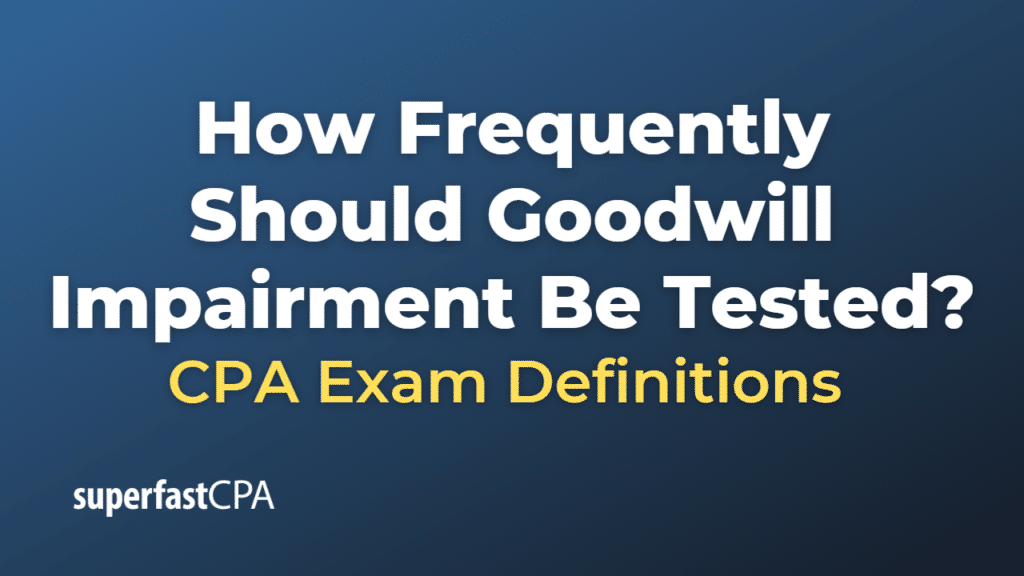How Frequently Should Goodwill Impairment Be Tested
Goodwill is the excess amount that a company pays for another business over and above the fair market value of its net identifiable assets during an acquisition.
According to U.S. Generally Accepted Accounting Principles (GAAP), goodwill is not amortized, but instead, it must be tested for impairment at least annually. This annual test is performed to ensure that the carrying value of goodwill on a company’s balance sheet isn’t greater than its fair value. If the carrying value is found to be greater than the fair value, an impairment loss must be recognized.
In addition to the annual impairment test, companies are required to test goodwill for impairment between annual tests if an event occurs or circumstances change (referred to as “triggering events”) that would more likely than not reduce the fair value of a reporting unit below its carrying amount. Such events might include a significant adverse change in business climate, unanticipated competition, loss of key personnel, likelihood that a reporting unit or a significant portion of it will be sold, and the testing for recoverability of a significant asset group within a reporting unit.
Companies may choose to perform a qualitative assessment first to determine whether it is necessary to perform the quantitative impairment test. This qualitative assessment involves determining whether it is more likely than not (i.e., a likelihood of more than 50%) that the fair value of a reporting unit is less than its carrying amount, including goodwill.
The frequency of the impairment test, therefore, depends on the specific circumstances and business conditions of each reporting unit. However, at a minimum, it should be conducted annually as per accounting standards.
Example of How Frequently Goodwill Impairment Be Tested
In 2023, a tech company called “Innovative Tech Inc.” acquires a smaller tech firm “NanoWorks” for $10 million. The net identifiable assets of NanoWorks at the time of acquisition were valued at $7 million. Therefore, Innovative Tech Inc. recognizes $3 million ($10 million – $7 million) as goodwill on its balance sheet.
Every year, as per U.S. GAAP, Innovative Tech Inc. must test this goodwill for impairment. Let’s assume that the first annual test in 2024 shows no impairment, i.e., the fair value of NanoWorks (or the related reporting unit) is still greater than its carrying value.
In 2025, however, a new competitive technology enters the market, severely impacting the future revenue prospects of NanoWorks. This is a “triggering event” that requires Innovative Tech Inc. to perform an interim goodwill impairment test, even if the annual test is not due yet.
Upon conducting the impairment test, it’s determined that the fair value of NanoWorks has dropped to $8 million, which is less than its carrying value including goodwill ($10 million). This means that the goodwill of $3 million is impaired.
The next step is to measure the impairment loss. If the implied fair value of the goodwill (calculated as the excess of the fair value of the reporting unit over the fair value of its net identifiable assets) is determined to be $1 million, then the impairment loss will be $2 million ($3 million existing goodwill – $1 million implied fair value of goodwill).
This $2 million impairment loss is then recognized in the income statement, and the carrying amount of goodwill on the balance sheet is reduced to $1 million ($3 million original goodwill – $2 million impairment loss).
This example shows how a goodwill impairment test is performed when a triggering event indicates potential impairment. The frequency of the test depends on the company’s annual testing schedule and the occurrence of any such triggering events.













